Physics - Center of Mass of Two Point Masses | 11th Physics : UNIT 5 : Motion of System of Particles and Rigid Bodies
Chapter: 11th Physics : UNIT 5 : Motion of System of Particles and Rigid Bodies
Center of Mass of Two Point Masses
Center of Mass of Two Point Masses
With the equations for center of mass, let us find the center of mass of two point masses m1 and m2, which are at positions x1 and x2 respectively on the X-axis. For this case, we can express the position of center of mass in the following three ways based on the choice of the coordinate system.
(i) When the masses are on positive X-axis:
The origin is taken arbitrarily so that the masses m1 and m2 are at positions x1 and x2 on the positive X-axis as shown in Figure 5.3(a). The center of mass will also be on the positive X-axis at xCM as given by the equation,

(ii) When the origin coincides with any one of the masses:
The calculation could be minimised if the origin of the coordinate system is made to coincide with any one of the masses as shown in Figure 5.3(b). When the origin coincides with the point mass m1, its position x1 is zero, (i.e. x1 = 0). Then,
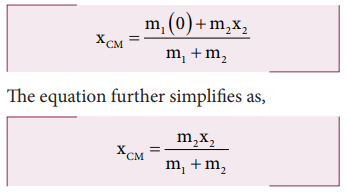
(iii) When the origin coincides with the center of mass itself:
If the origin of the coordinate system is made to coincide with the center of mass, then, xCM = 0 and the mass m1 is found to be on the negative X-axis as shown in Figure 5.3(c). Hence, its position x1 is negative, (i.e. -x1).

The equation given above is known as principle of moments. We will learn more about this in Section 5.3.3.
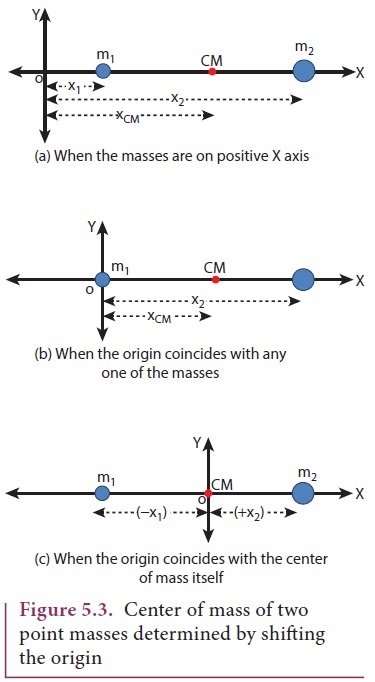
Solved Example Problems for Center of Mass of Two Point Masses
Example 5.1
Two point masses 3 kg and 5 kg are at 4 m and 8 m from the origin on X-axis. Locate the position of center of mass of the two point masses (i) from the origin and (ii) from 3 kg mass.
Solution
Let us take, m1 = 3 kg and m2= 5 kg
(i) To find center of mass from the origin:
The point masses are at positions, x1 = 4 m, x2 = 8 m from the origin along X axis.
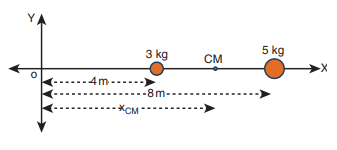
The center of mass xCM can be obtained using equation 5.4.
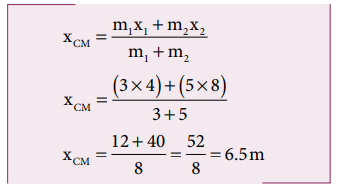
The center of mass is located 6.5 m from the origin on X-axis.
(ii) To find the center of mass from 3 kg mass:
The origin is shifted to 3 kg mass along X-axis. The position of 3 kg point mass is zero (x1 = 0) and the position of 5 kg point mass is 4 m from the shifted origin (x2 = 4 m).
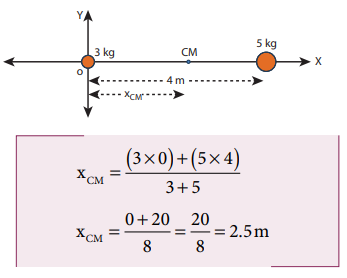
The center of mass is located 2.5 m from 3 kg point mass, (and 1.5 m from the 5 kg point mass) on X-axis.
This result shows that the center of mass is located closer to larger mass.
If the origin is shifted to the center of mass, then the principle of moments holds good.
m1x1=m2x2; 3x2.5=5x1.5;7.5=7.5
When we compare case (i) with case (ii), the xCM = 2.5m from 3 kg mass could also be obtained by subtracting 4 m (the position of 3 kg mass) from 6.5 m, where the center of mass was located in case (i)
Example 5.2
From a uniform disc of radius R, a small disc of radius R/2 is cut and removed as shown in the diagram. Find the center of mass of the remaining portion of the disc.
Solution
Let us consider the mass of the uncut full disc be M. Its center of mass would be at the geometric center of the disc on which the origin coincides.
Let the mass of the small disc cut and removed be m and its center of mass is at a position R/2 to the right of the origin as shown in the figure.
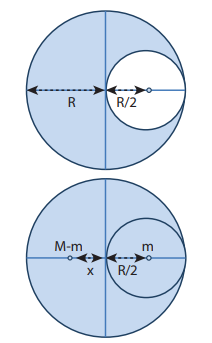
Hence, the remaining portion of the disc should have its center of mass to the left of the origin; say, at a distance x. We can write from the principle of moments,
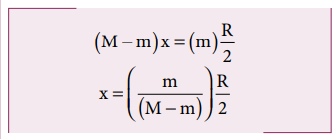
If σ is the surface mass density (i.e. mass per unit surface area), σ=M/πR2; then, the mass m of small disc is,
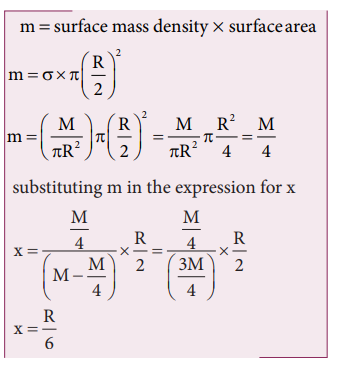
The center of mass of the remaining portion is at a distance R/6 to the left from the center of the disc.
If, the small disc is removed concentrically from the large disc, what will be the position of the center of mass of the remaining portion of disc?
Example 5.3
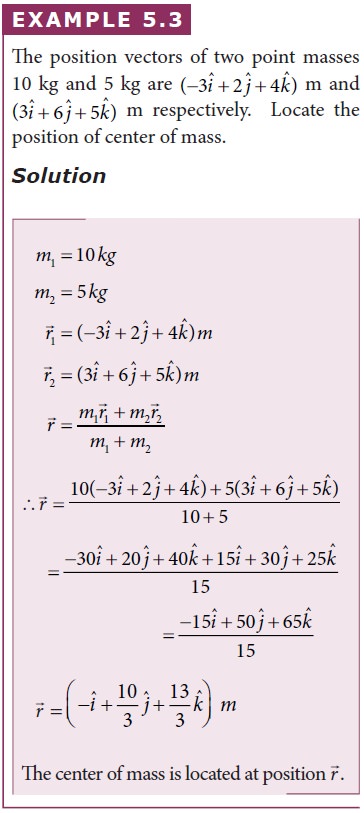
Related Topics